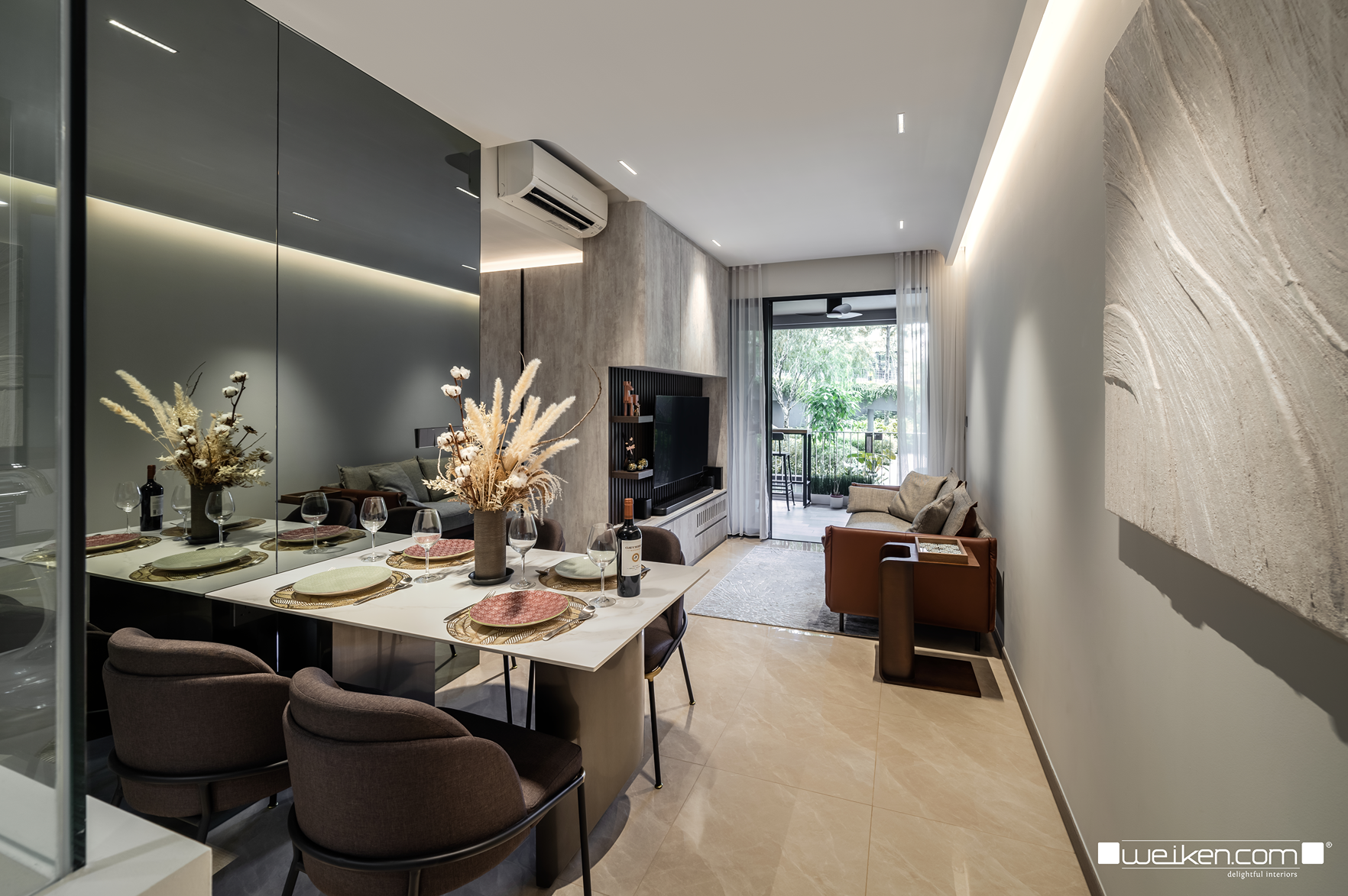What You Need To Know About Modern Contemporary Interior Design
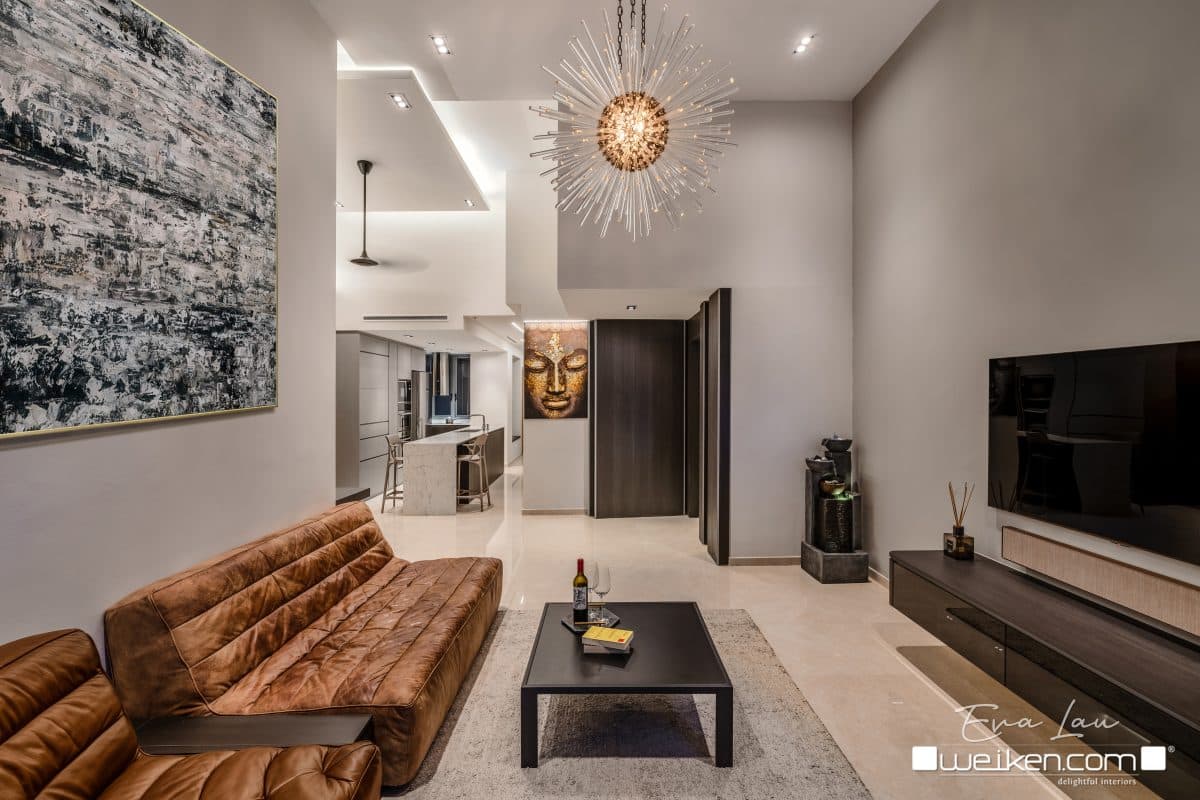
Modern Contemporary Interior Design involves innovative designs that align with the latest global trends.
This design style is a hybrid that draws inspiration from both modern elements and contemporary design principles. It is a distinct idea in interior design that values different materials, texture, simplicity, and clean lines.
This article delves into the definition, typical characteristics, and features of modern contemporary interior design, focusing on how this style has become increasingly popular in Singaporean homes.
Understanding This Modern Contemporary Theme
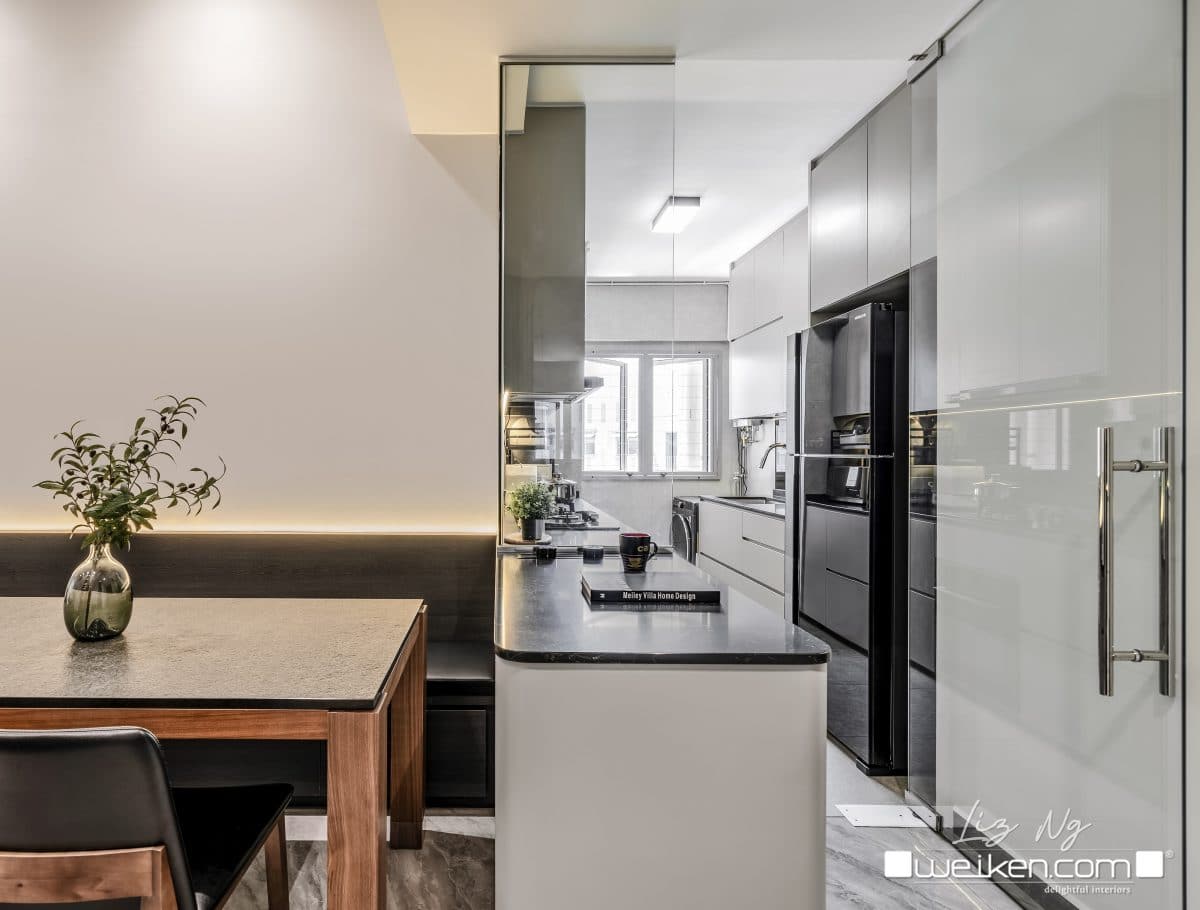
Modernism is often confused with Contemporary design. Although, both styles have some similarities yet are distinct. The contemporary design focuses on sleek styles, technological innovation, and dark colors with bright accents. Modernism uses a more neutral color palette and employs industrial materials such as reinforced concrete, brick, steel, and glass.
Modern contemporary interior design style includes technology, voice-activated assistants, smart appliances, and a sustainable design approach. This theme takes light inspiration from other interior design styles some of which are Balinese, Scandinavian, English, or Japanese.
Typical Characteristics of Modern Contemporary Interior Design
1. Neutral Colour Palette

The best way to form the foundation of a modern contemporary interior space is to start with neutral colours. Shades of white, beige, gray, and taupe dominate the color scheme, acting as a backdrop that allows other design elements such as artwork to pop. Walls painted in these neutral colors are accentuated with bright colors such as blue, gold, or red to add drama to a simple interior.
2. Clean and straight lines
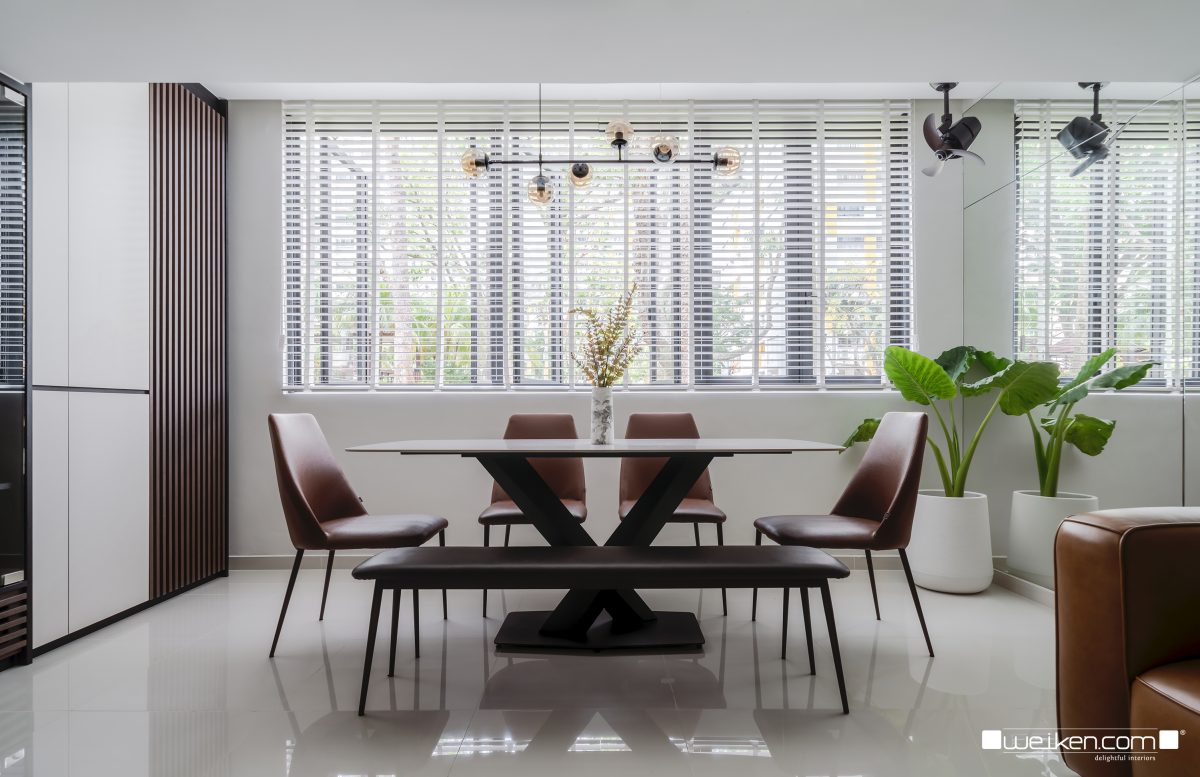
Simplicity is the core principle for a modern contemporary home. Clean lines and minimal ornamentation contribute to a clutter-free look. This style has a linear design approach to emphasise the negative space for the room to appear larger. This is done using an informed furniture layout with straight lines and smooth surfaces to guide the eye along a visual path around the room.
3. Open Spaces and Floor plans
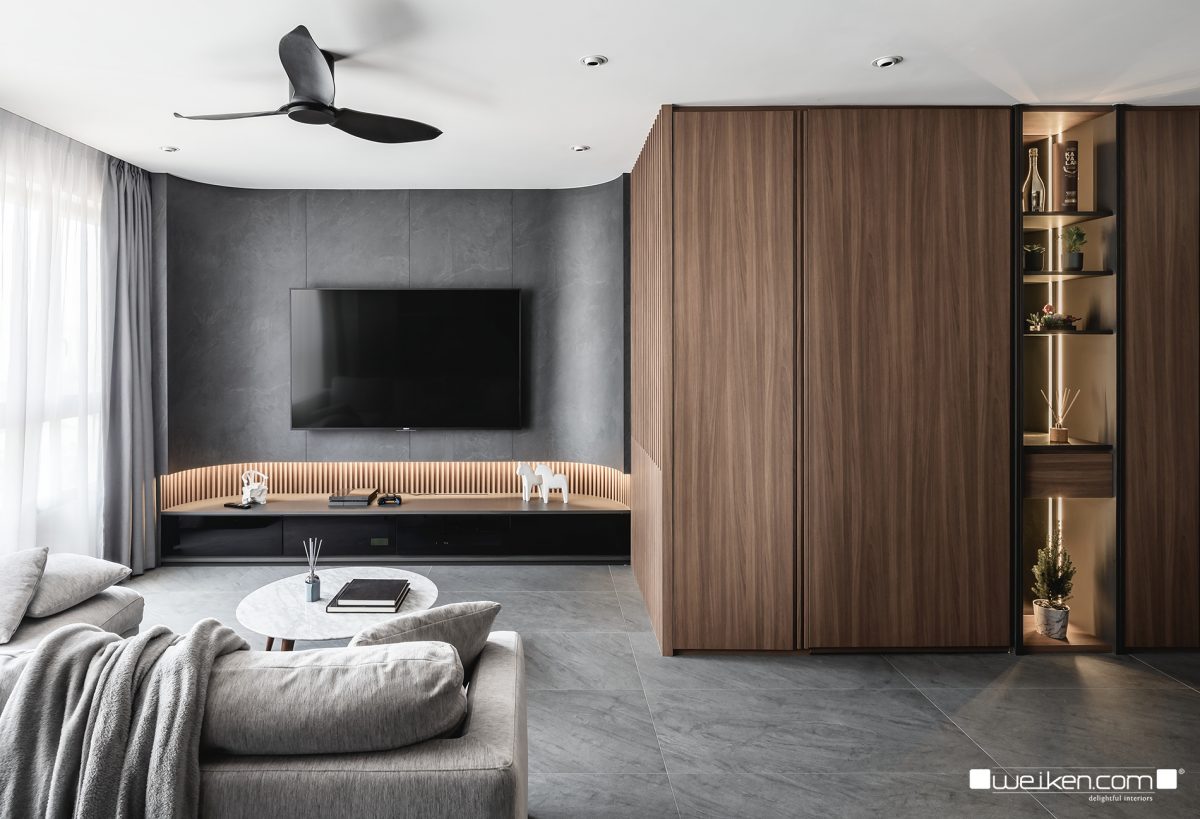
Modern contemporary interior design involves open floor plans and airy rooms where rooms flow seamlessly into one another. This design approach not only maximizes space but also creates a sense of openness and connectivity within the home. Large windows are used to bring in natural light to enhance the room’s airy atmosphere.
4. Use of Natural Materials
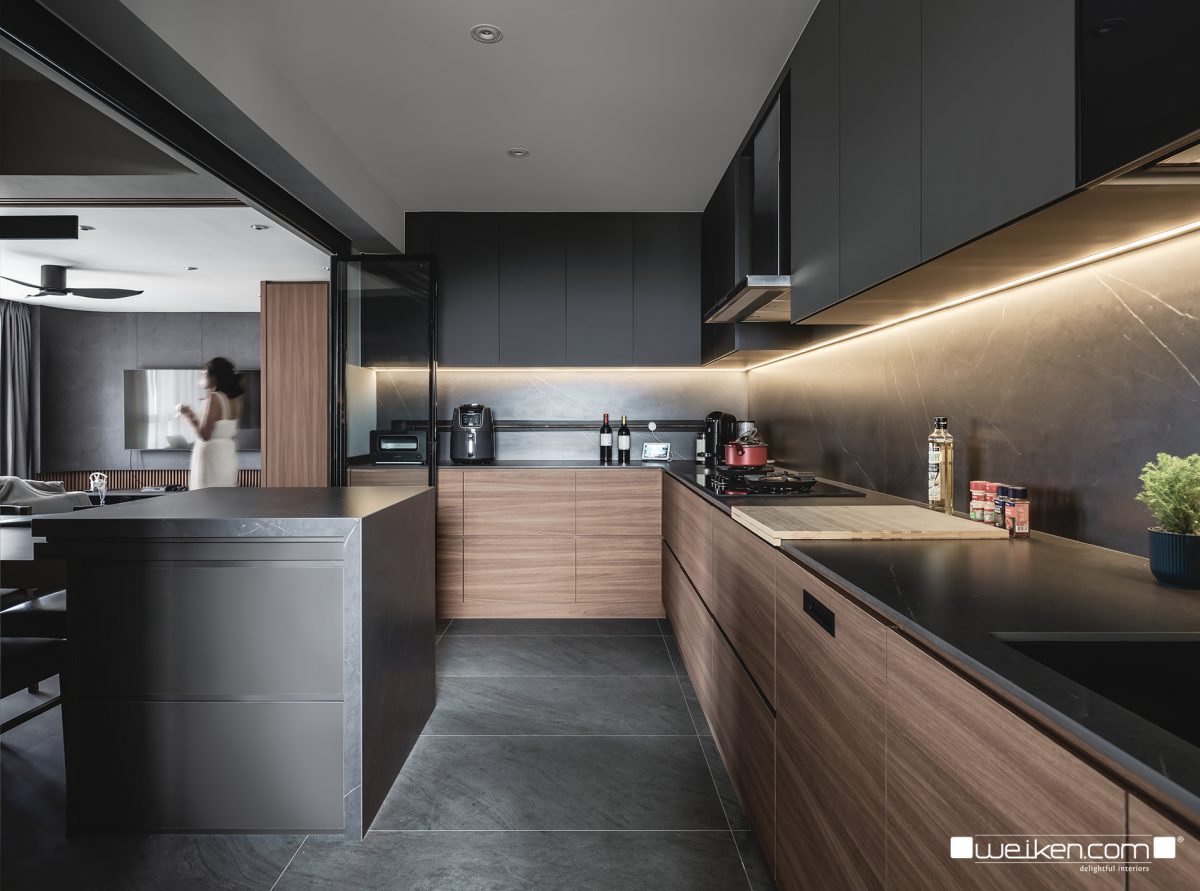
Incorporating natural materials including carved wood, metal accents and natural woven elements such as jute adds warmth throughout the home. From hardwood flooring to exposed brick accent walls, these materials create a sense of harmony between the indoors and outdoors.
Features of A Modern Contemporary HDB Home in Singapore
1. Space Optimization
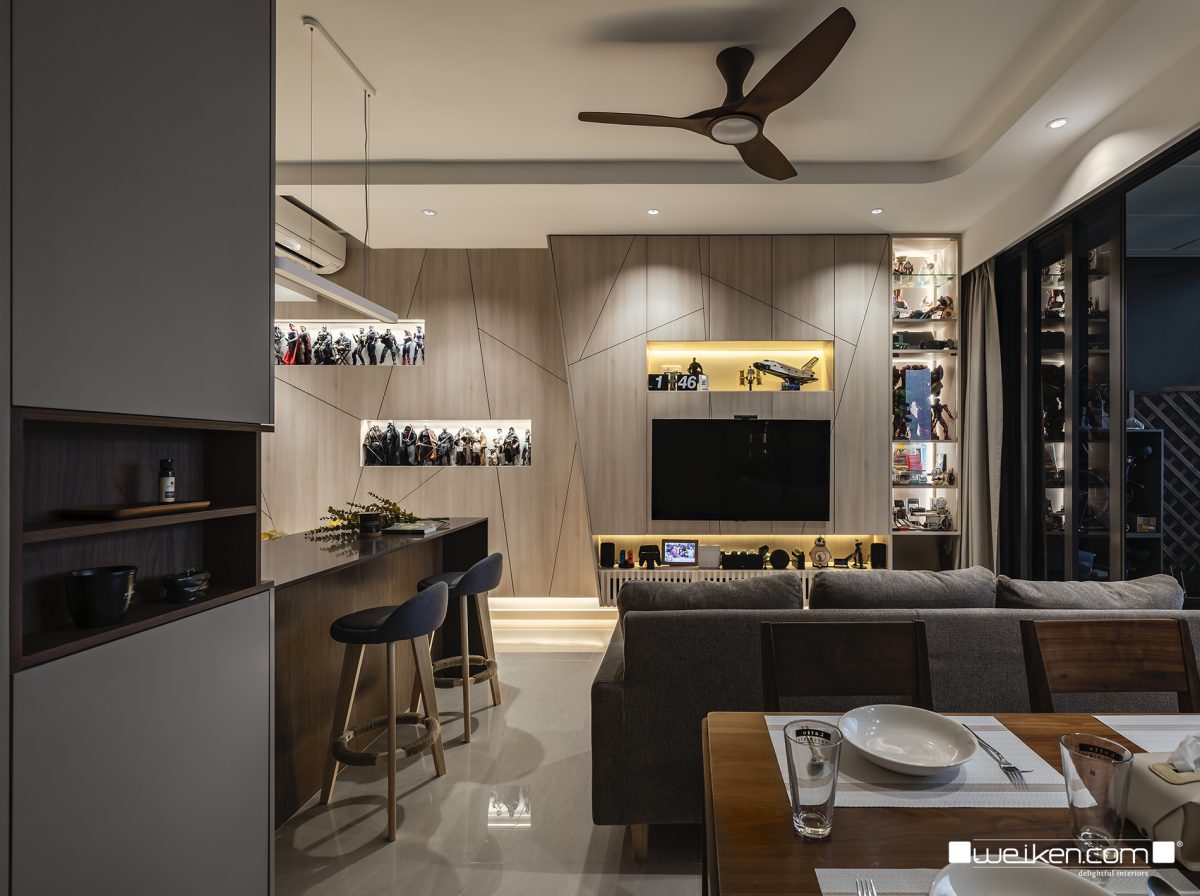
With limited floor areas in certain HDB homes in Singapore, well-thought-out space planning is essential. Modern Contemporary homes are designed in a way to maximize the strength of the residential space.
Furniture with multi-functional designs, for example, sofa beds or extendable dining tables along with built-in cabinets, and shelves are common storage solutions. Staircase storage is another ingenious space-making solution used in modern contemporary interiors.
2. Technology Integration
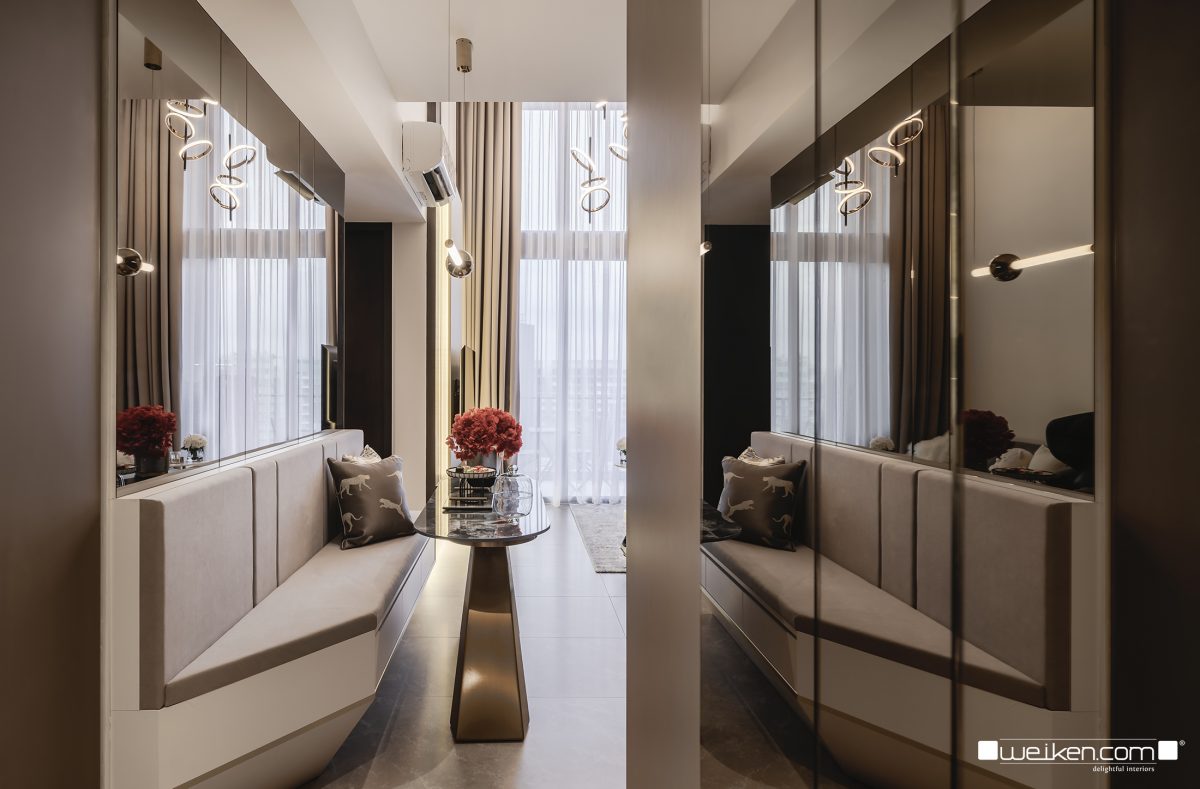
A significant feature of modern contemporary homes in Singapore is the use of technology. Home automation systems, smart lighting, and climate control systems, all seamlessly blend technology into design.
Moreover, from floor lamps and wall sconces to ceiling lighting mounts and chandeliers, this interior design style offers so much to choose from when it comes to lighting fixtures. Some fixtures come in straight lines and sandy colors while others have glass shades, curved swirls, and metallic finishes to add rich and warm light to your hallways, bedrooms, bathrooms, and any other desirable areas.
3. Art and Decor as Focal Points
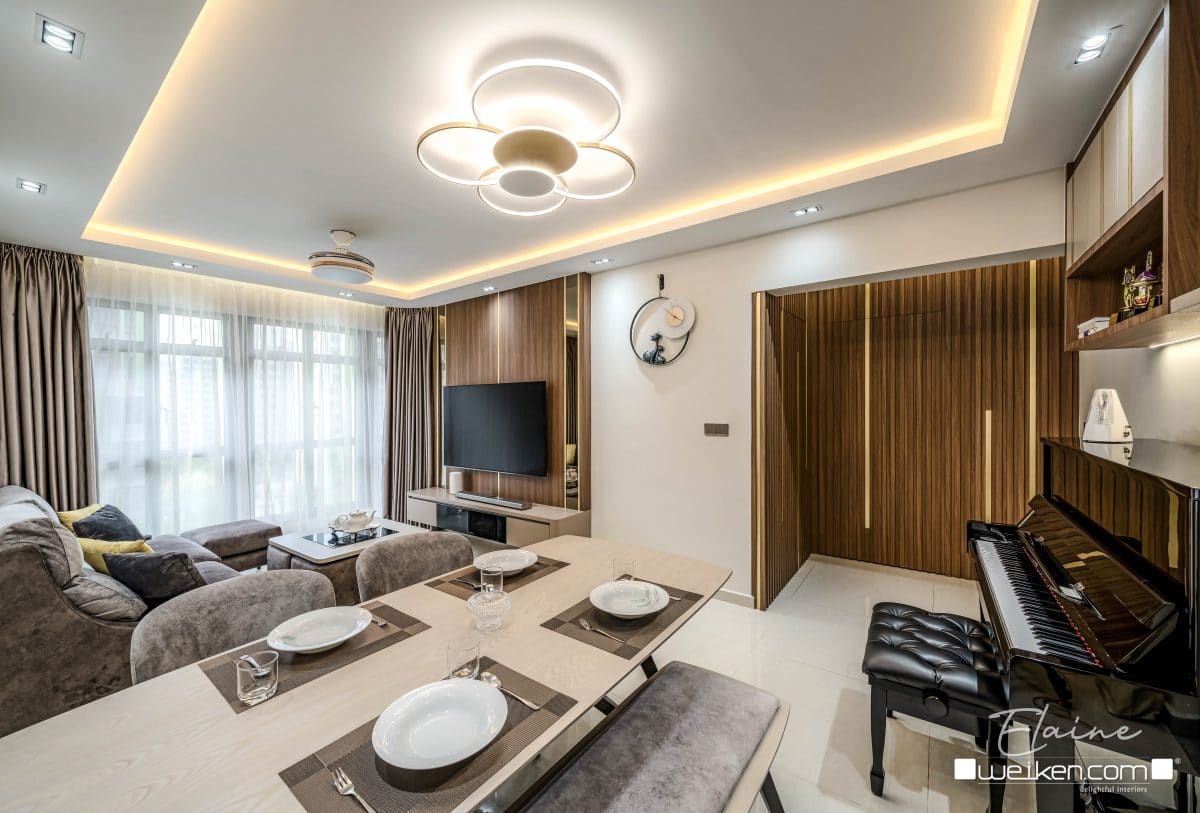
You can play with various shapes and patterns in modern contemporary homes. Bold artwork, sculptures, or eye-catching rugs in various colors and geometric patterns can be strategically placed to draw attention and become the focal point of any space.
Furniture can take whimsical shapes while décor with a mix of vintage pieces with some new ones can add personality and character to a space (be cautious not to overdo it to maintain an uncluttered appearance). Layered textures such as marble and leather also add to the character of the space.
4. Functionality and Aesthetics
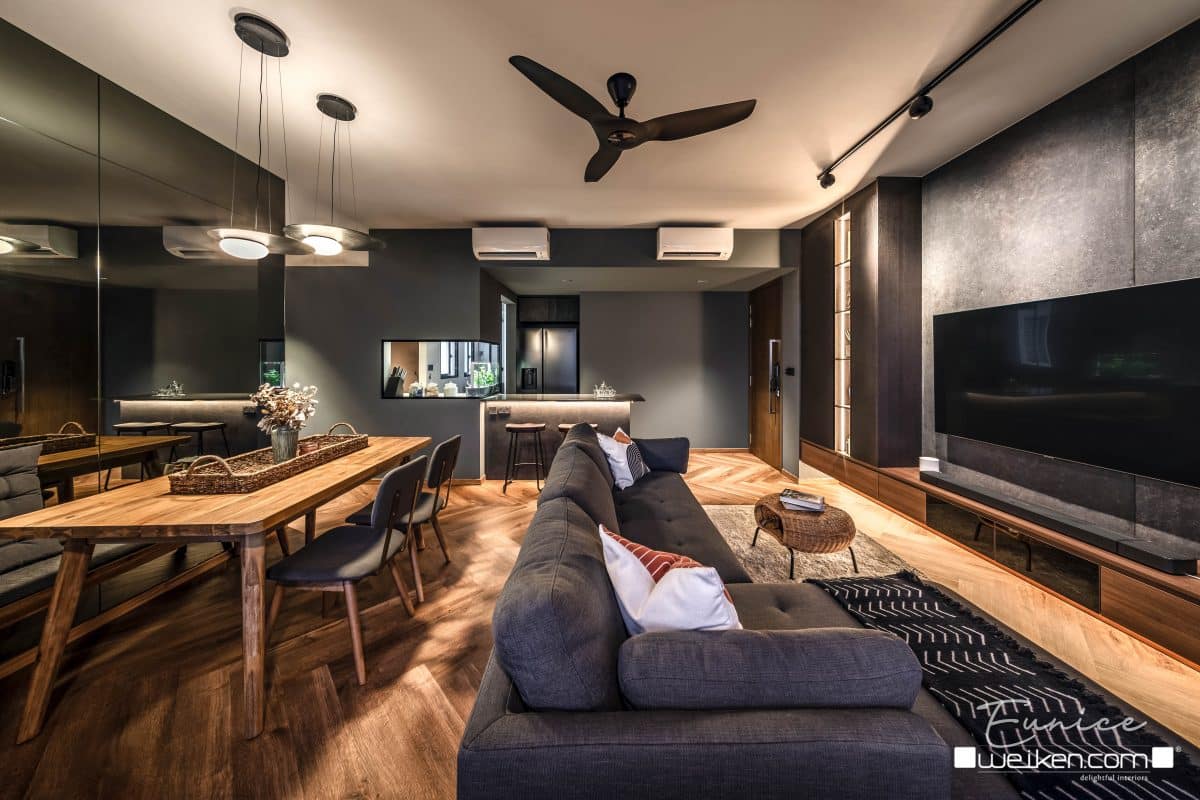
Modern contemporary interior design offers the perfect balance between functionality and aesthetics. Every design element serves a purpose, optimizing the use of space while contributing to the overall design appearance. This seamless integration allows Singaporeans to enjoy a home that is not only visually stunning but also practical and efficient in meeting their daily needs.
5. Sustainable Design Approach
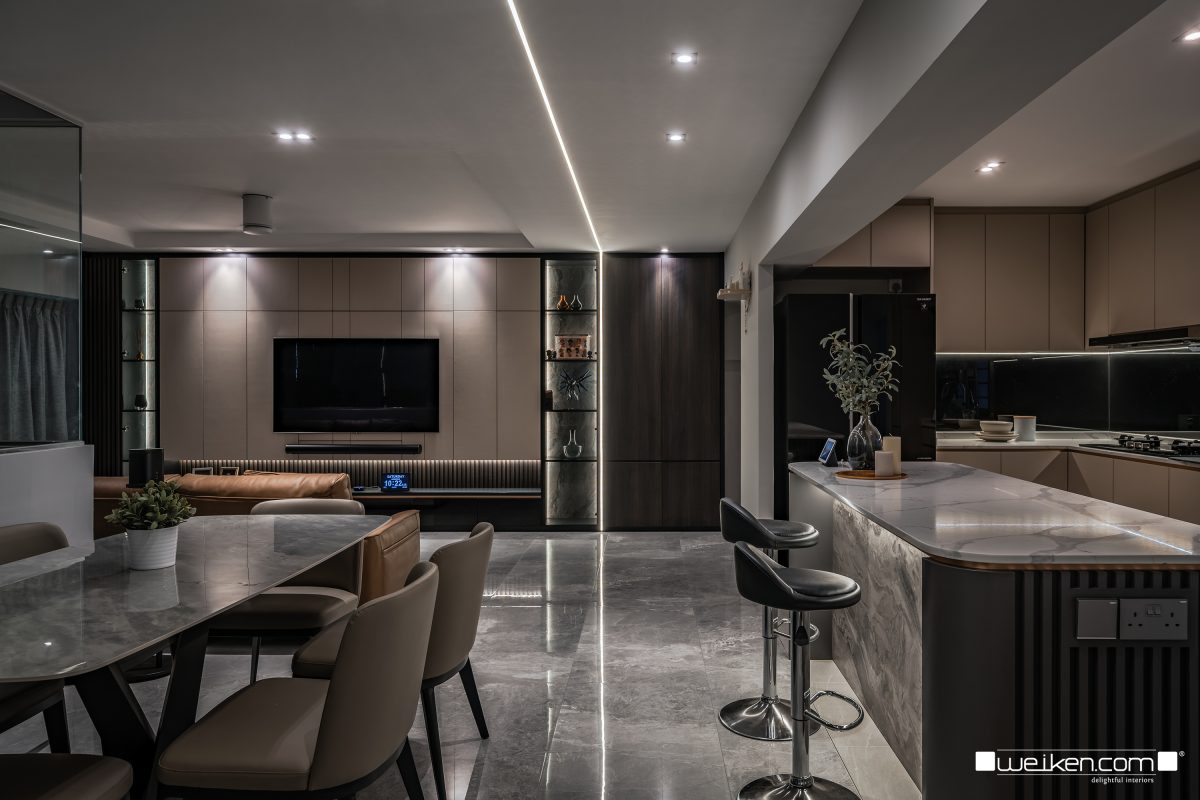
With the increasing awareness of sustainability, modern contemporary HDB homes may include eco-friendly elements. Energy-efficient lighting, water-saving fixtures, and the use of recycled materials are examples of sustainable design practices that are favored in this style.
Another key feature is that modern contemporary interior design uniquely adapts to the tropical climate in Singapore by incorporating natural ventilation, indoor-outdoor connections, and abundant greenery. This sustainable approach creates lovely spaces while promoting a comfortable and eco-friendly living environment, aligning with the country’s vision of sustainability.
Lush indoor gardens, vertical green walls, and potted plants bring nature to the interior, exuding a calm and relaxing ambiance. Not only is this soothing to the eye but also helps improve the air quality to promote healthier living.
From energy-saving LED lighting to recycled and locally sourced materials, the emphasis on sustainability continues to support the country’s vision of creating a greener and more sustainable urban landscape.
Conclusion
In conclusion, modern contemporary HDB homes in Singapore are the best examples of an elegant and practical approach to interior design. These homes are warm, stylish, and well-suited for the modern urban lifestyle in terms of space optimization, minimalistic design approach, and incorporating nature, and technological integration.
Since this design style successfully addresses the challenges of designing interior spaces due to climate concerns, it has really captivated Singapore audiences. Singaporean HDB homes are increasingly integrating green elements in their interiors to create a more refreshing and peaceful indoor atmosphere.
